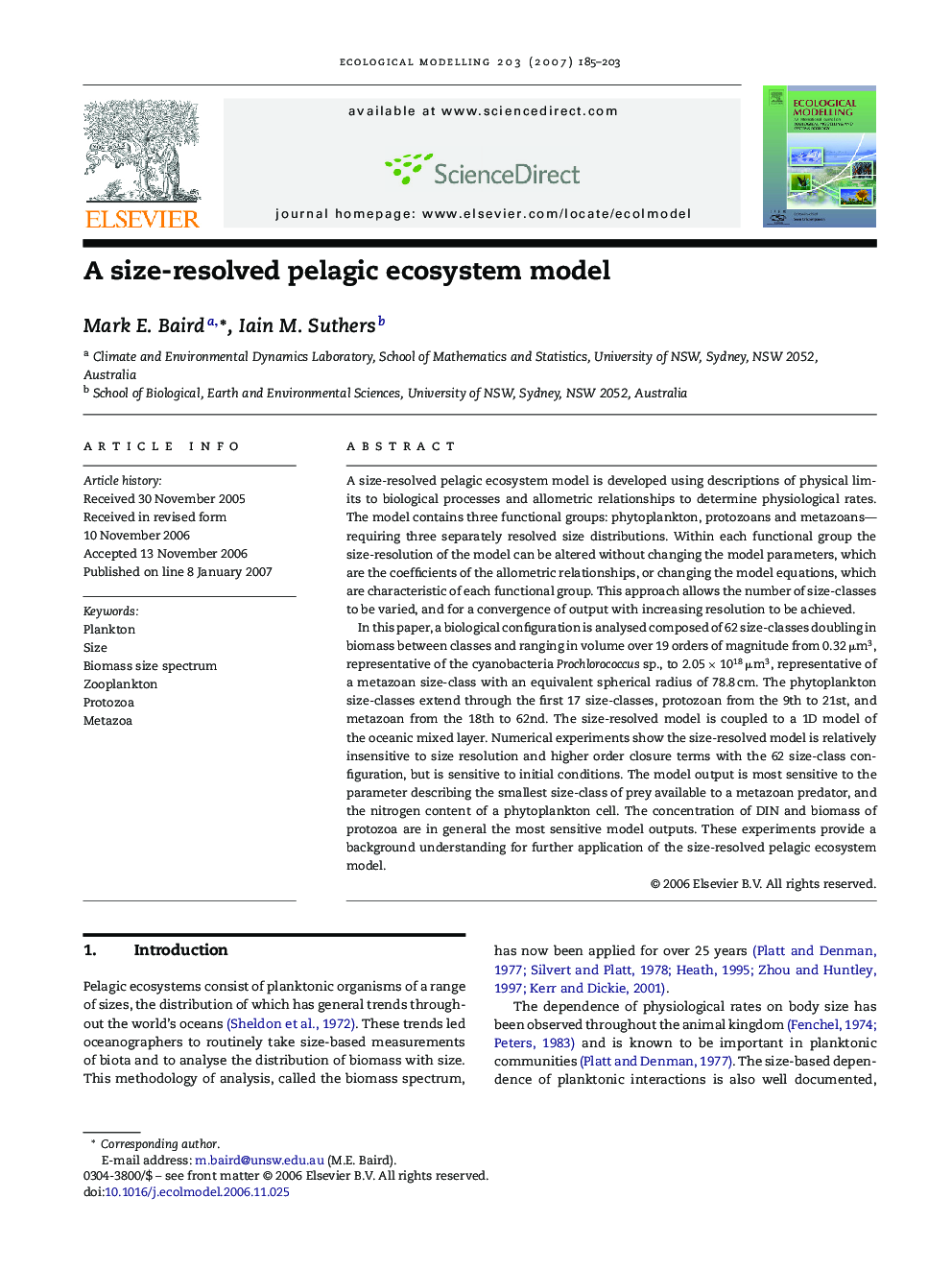| Article ID | Journal | Published Year | Pages | File Type |
|---|---|---|---|---|
| 4378544 | Ecological Modelling | 2007 | 19 Pages |
A size-resolved pelagic ecosystem model is developed using descriptions of physical limits to biological processes and allometric relationships to determine physiological rates. The model contains three functional groups: phytoplankton, protozoans and metazoans—requiring three separately resolved size distributions. Within each functional group the size-resolution of the model can be altered without changing the model parameters, which are the coefficients of the allometric relationships, or changing the model equations, which are characteristic of each functional group. This approach allows the number of size-classes to be varied, and for a convergence of output with increasing resolution to be achieved.In this paper, a biological configuration is analysed composed of 62 size-classes doubling in biomass between classes and ranging in volume over 19 orders of magnitude from 0.32 μ m3, representative of the cyanobacteria Prochlorococcus sp., to 2.05×10182.05×1018 μ m3, representative of a metazoan size-class with an equivalent spherical radius of 78.8 cm. The phytoplankton size-classes extend through the first 17 size-classes, protozoan from the 9th to 21st, and metazoan from the 18th to 62nd. The size-resolved model is coupled to a 1D model of the oceanic mixed layer. Numerical experiments show the size-resolved model is relatively insensitive to size resolution and higher order closure terms with the 62 size-class configuration, but is sensitive to initial conditions. The model output is most sensitive to the parameter describing the smallest size-class of prey available to a metazoan predator, and the nitrogen content of a phytoplankton cell. The concentration of DIN and biomass of protozoa are in general the most sensitive model outputs. These experiments provide a background understanding for further application of the size-resolved pelagic ecosystem model.
